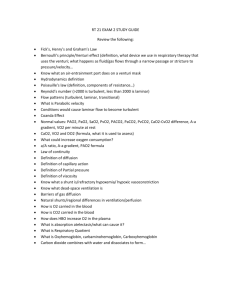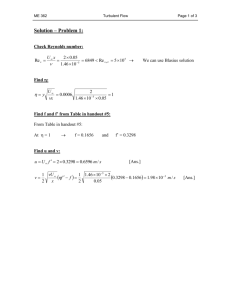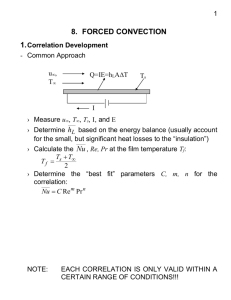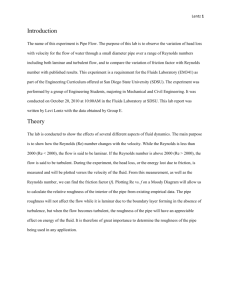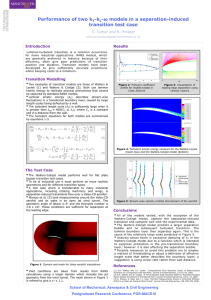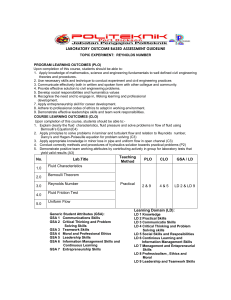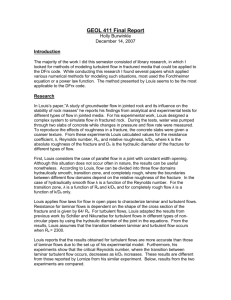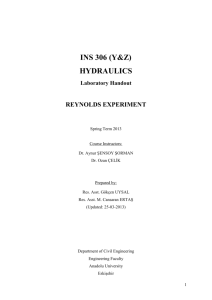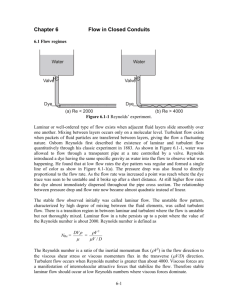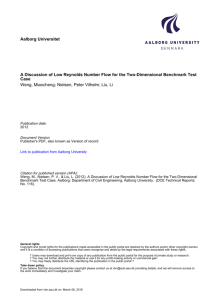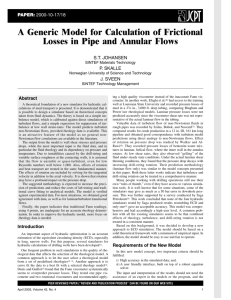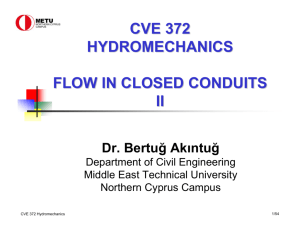ae – 547 experimental aerodynamics the reynolds number and
advertisement
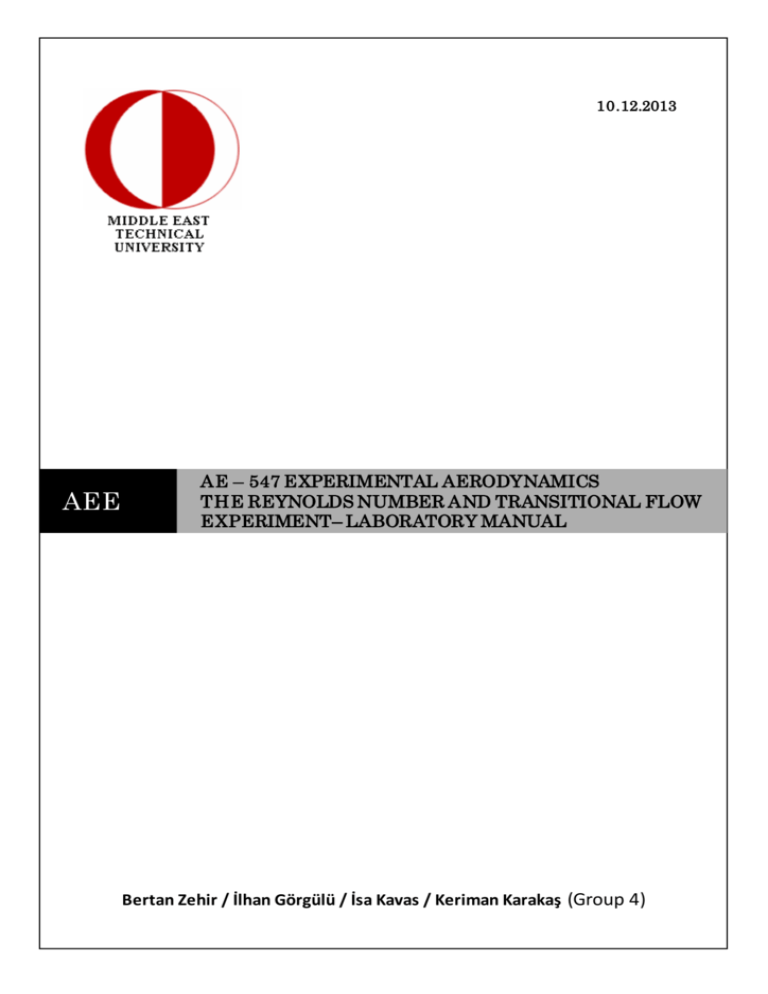
10.12.2013 AEE AE – 547 EXPERIMENTAL AERODYNAMICS THE REYNOLDS NUMBER AND TRANSITIONAL FLOW EXPERIMENT– LABORATORY MANUAL Bertan Zehir / İlhan Görgülü / İsa Kavas / Keriman Karakaş (Group 4) AE – 547 EXPERIMENTAL AERODYNAMICS THE REYNOLDS NUMBER AND TRANSITIONAL FLOW EXPERIMENT– LABORATORY MANUAL I. OBJECT The object of the experiment is to observe the transition of the flow from laminar to turbulent, to calculate at which Reynolds Number it occurs and repetitively verify the results in order to obtain a range with the changing flow speed. II. EXPERIMENTAL SETUP The Reynolds Number and Transitional Flow demonstrates the kind of experiment conducted to show the dependence of flow on Reynolds Number. The device used in the experiment, H215 (Figure 1), enables the observation of the flow transformation from laminar to turbulent in different velocities. Figure 1 – The H215 1 – H215 Experiment III. THEORY The Reynolds Number is defined as the ratio of inertial forces to viscous forces. The flow characteristics do not change instantly since the fluid shows reluctance to change from one condition to another. This reluctance causes the hysteresis shown in the Figure 2 and it is expected to be observed around 2300 value of Re number for tubular ducts. On increasing the velocity, transition occurs between points A and B, and for decreasing flow it occurs between points C and D. The point D, being the most well-defined and accepted as the starts of the transitional flow, the experiment is to observe this transitional area in the graph. Figure 2 – Variation of head loss with velocity for flow along a pipe The formulations to be used in the calculation throughout the experiment are as follow where ρ is the fluid density, d is the characteristic length, u is the free stream velocity and is the dynamic viscosity; 2 – H215 Experiment IV. TEST PROCEDURE Set up the apparatus Turn on the water supply and partially open the discharge valve at the base of the apparatus Record the temperature of the tap water Adjust the water supply until the level in the constant head tank is just above the overflow pipe and keep it at this level by small flow down the overflow pipe Open and adjust the die injector and maintain a fine filament of die in the flow down to the glass tube, achieve a laminar flow condition for die filament Record two different data of the flow rate when the flow observed laminar Increase the flow rate by opening the discharge valve until the observable disturbance occurs which is the transition point and should be noted Record the one flow rate sample when the flow is in the transition region Increase the flow rate by opening the discharge valve until the transition to turbulent passing occurs, record one more data Increase the water supply furthermore to maintain constant head conditions in turbulent region Record two different data of the flow rate when the flow observed turbulent Increase the flow rate until the disturbances such that die filament becomes fully turbulent which is the onset of fully turbulent flow, record temperature and the flow rate as defined in the previous steps Decrease the flow rate slowly until the die returns to steady laminar filament and then again record the temperature and the flow rate in the same procedure. Seven data should be recorded. (2 turbulent, 3 transition, 2 laminar) Laminar flow, transition and fully turbulent characteristics are shown in the Figure 3 below. In the experiment this patterns will be observed and recorded independently. Velocity calculations will be handled as follow where Q is the flow rate (200 x 10-6 m3, fixed by the volume of the container at the exit), r is the inner radius of the pipe (6 x 10-3 m), and t is the time; 3 – H215 Experiment Figure 3 – Typical flow patterns at various flow conditions Effect of varying viscosity; Viscosity of water varies with the temperature as shown in the Figure 4 below. Viscosity should be read from Figure 4 corresponding to the measured temperature value. Datasheet is given in Table 1. 4 – H215 Experiment Figure 4 – Kinematic Viscosity of Water at Various Temperatures Table 1 – Datasheet Data # Condition for Laminar Condition for Turbulent Time for 200 ml (s) Time for 200 ml (s) to Turbulent Transition to Laminar Transition 1 2 3 4 5 6 7 Temperature (0C) V. RESULTS AND DISCUSSION Calculate velocity u [m/s], kinematic viscosity [m2 / s] and the Re Number for each recording raw in the table above. Tabulate Re Number for each data point Discuss the transition region passing points in the graph for laminar to turbulent transition and turbulent to laminar transition Discuss the results and compare with the existing theory 5 – H215 Experiment


